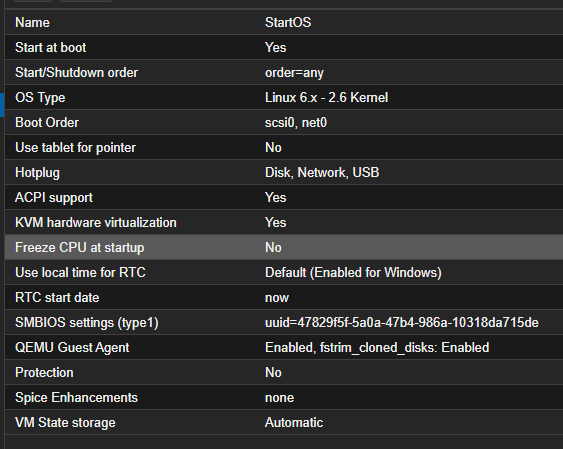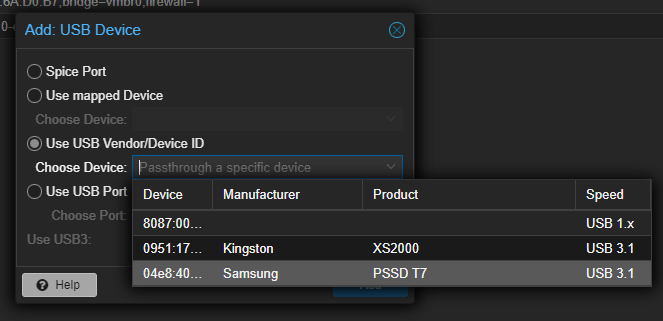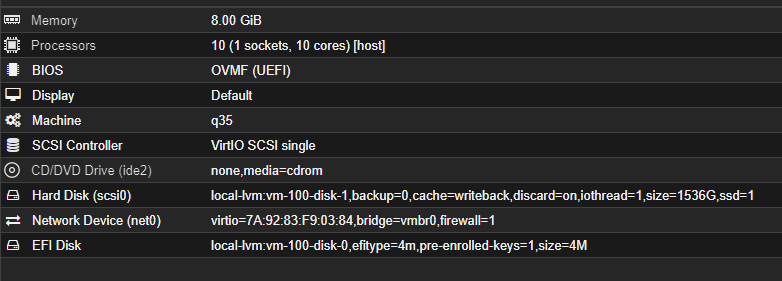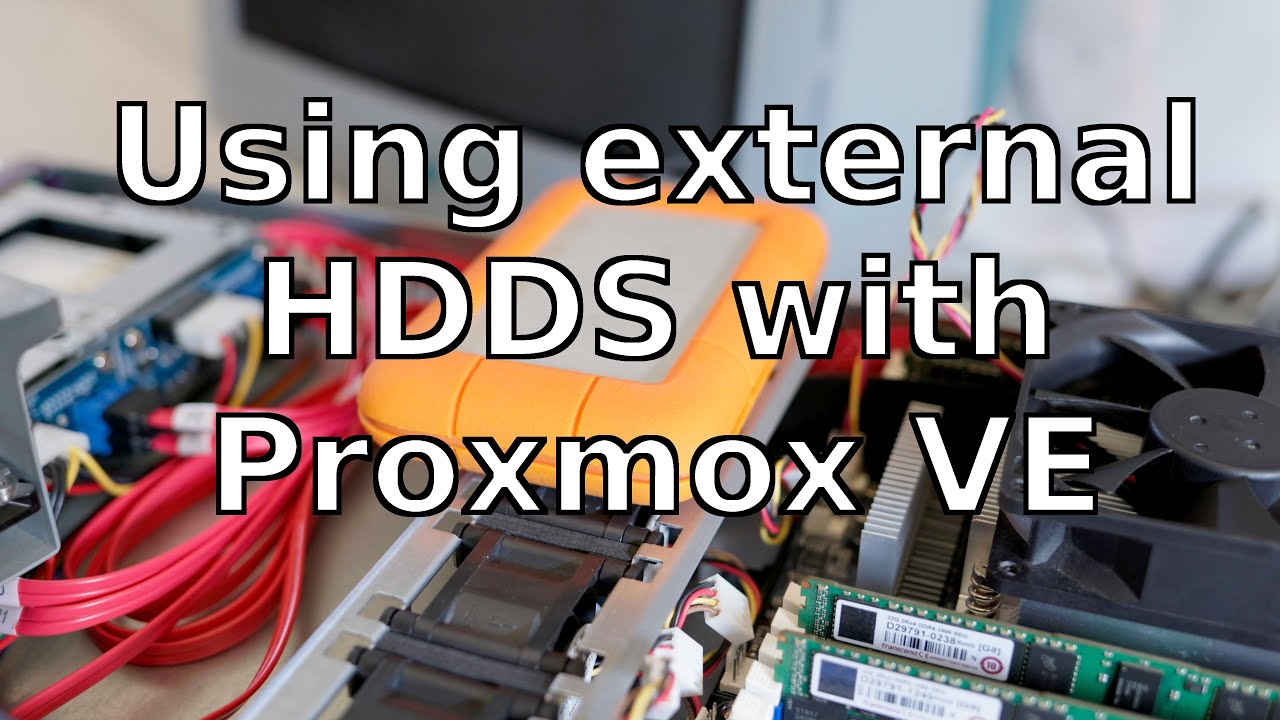Ok, I’ve been playing with start9 since last April. I started by installing it on a fairly new PC (2 years old) which was not my main system being used at the time. I have 5 SSD drives in it (3 NVMe totaling 4.5 TB, 2 SATA totaling 750 GB), i also have 64 GB of RAM and an 8 core intel cpu.
At that time i had Linux mint running on one SSD and installed start9 on a different SSD. Now im far from being a techie because i just started playing with Linux so dont think im an expert. I still consider myself a newb. I didn’t like that setup because I couldn’t use the Linux drive without shutting down start9. So i after looking at options i decided to get a raspberry pi4 with gb ram and 2 TB ssd nvme on the pi. Although it ran pretty good, as i started running more services, it started to slow down so i thought i would go back to the pc since its much more powerful. I wiped the pc and installed PROXMOX with start9 on it but I wasn’t sure about allocating resources to it and I didn’t like the proxmox experience so i wiped it and installed it on the pc again. Now i find this is the best way since start9 is using all the resources and it’s very fast. Downloaded the bitcoin blockchain in less than 20 hours. BUT im curious is there a better way to use this pc with start9 on it? A way wher i can have Linux running and start9 at the same time. PROXMOX is above my expertise.
If you want to run multiple OSs side by side, virtualization is your only option, and, Proxmox is in my opinion the best (free) option available currently. It has a bit of a learning curve, but there’s a lot of good videos on youtube available on how to set it up, configure and install client virtual machines.
I’m running Start9 on proxmox on an Intel NUC together with other VMs like openmediavault for storage/samba shares and a separate VM running docker for other stuff. It has been perfect for me.
thanks for the info, Did you set up proxmox as in ZFS raid1 or btrfs raid1 as the filesystem?
My NUC has an nvme drive and sata drive of different sizes so I don’t use RAID.
I followed the default installation steps and it automatically set up the LVM filesystem on the nvme disk. I use that for VM and container disks.
I manually configured the 2nd (sata) disk as ZFS and use it for other storage and local backups of those VMs and containers.
I’m no expert though and this is my first experience with Proxmox too. I basically just followed the default installation steps of proxmox and some tutorials on youtube.
This is the hardware and options of the StartOS VM:
(note: the CD/DVD doesn’t have the .iso anymore, on first install of start9, you need to put the installation .iso in there, so it will boot from that iso first time). After installation, you can remove it.

If I remember correctly, before installation of start9 on the VM, I had to go into the bios of the VM and disable “Secure boot” (not 100% sure about it, but worth a try if start9 doesn’t boot on first install)
I tried again with proxmox and I have no problem installing it but I can’t figure out how to back it up. When I put it directly on the pc all my hard drives were there for back up. There’s nothing showing for back up now. I plug in the usb drive where my back up is and it doesn’t see it. Am I missing something?
So you plugged your drive in and went to system → create backup and it is not showing any drives available? The key is getting StartOS to recognize the drive. Should be possible with Proxmox. @OKIN is our proxmox connoisseur. He probably knows exactly what to do. I’ll search around to see if I can find out more as well
You also might try backing up to a network drive on a different computer. Start9 | Backup Create
I have had some setups where it just worked better to backup to a network drive. Even a good thumb drive will work
My existing backup is on a Samsung external ssd drive connected to a usb port on my pc that proxmox is on. It shows it under disks on proxmox but when I tried restoring from it it’s not available. I also have 3 other internal ssd’s in my system but none of them are available for backup. I tried attaching the external ssd to a different pc but I can’t figure out paths and all that.
So you are not needing to restore, you were just testing it to see if it showed up?
Was the different PC running Windows. It can be tricky getting the user and path on Windows sometimes
No I wanted to restore my original start9 server that’s on my external ssd but I couldnt do it when I was installing start9 on proxmox and I can’t do it now. The PC did not have an operating system on it. I installed proxmox and then start9.
Also do you know if your drive was formatted using exFat. If you are not sure, you might try formatting a different drive and seeing if it makes a difference.
it was either expat or fat
exFat is preferred. Might be worth a shot. I have also sent this to the team, so they may have more ideas. I am pretty sure you can get it solved
I’m pretty sure that’s what it was. My main issue now is to recover my original server from the external drive.
When you run an OS inside a virtual machine, you normally do not have direct access to your hardware (like your physical drives), since the virtual machine is basically completely separated from the host machine (running proxmox).
If you need direct access to the disk (like in your case, since you have data on it). You can use the “PCIe/USB passtrough” functionality of proxmox.
This allows passing through the physical drive to one virtual machine so that it can directly access it. Note: you can only pass a PCIe/USB device to one virtual machine at a time.
Under “Hardware” of your StartOS virtual machine, click “Add > USB Device”, choose your USB drive.

Reboot the VM. Now the USB port (and drive) should be available to StartOS.
Hi @Niko & thanks for tagging me in @Rick
The short answer is that just plugging a drive into your ProxMox server won’t initialize it automatically nor will the drive being installed on the computer without it being initialized, so it will not be seen by anything on ProxMox.
Going through the initialization process takes having to wipe the drive so that it can be seen by the ProxMox Server directly & then used as storage space for both VMs & Containers.
There are a few different ways to have the drive added while it still has data on it, but not all of them are easy to achieve as the usage of USB drives is not something ProxMox necessarily supports, even though it can be done.
This is going to be a bit of work on your end, but here is a comprehensive video on the different methods to achieve this.
Im sorry i havent been here for a while, my real job got in the way. I appreciate everyone’s help and i will go through everything and try again. I managed to add the usb device on the start9 server but unfortunatelly i lost my backup somewhere so i have to start over again. luckily i was able to download all my vaultgarden passwords from one of my devices but everything on Nextcloud is gone.
Thanks again,
I will work on this and hopefully i can post something positive.

